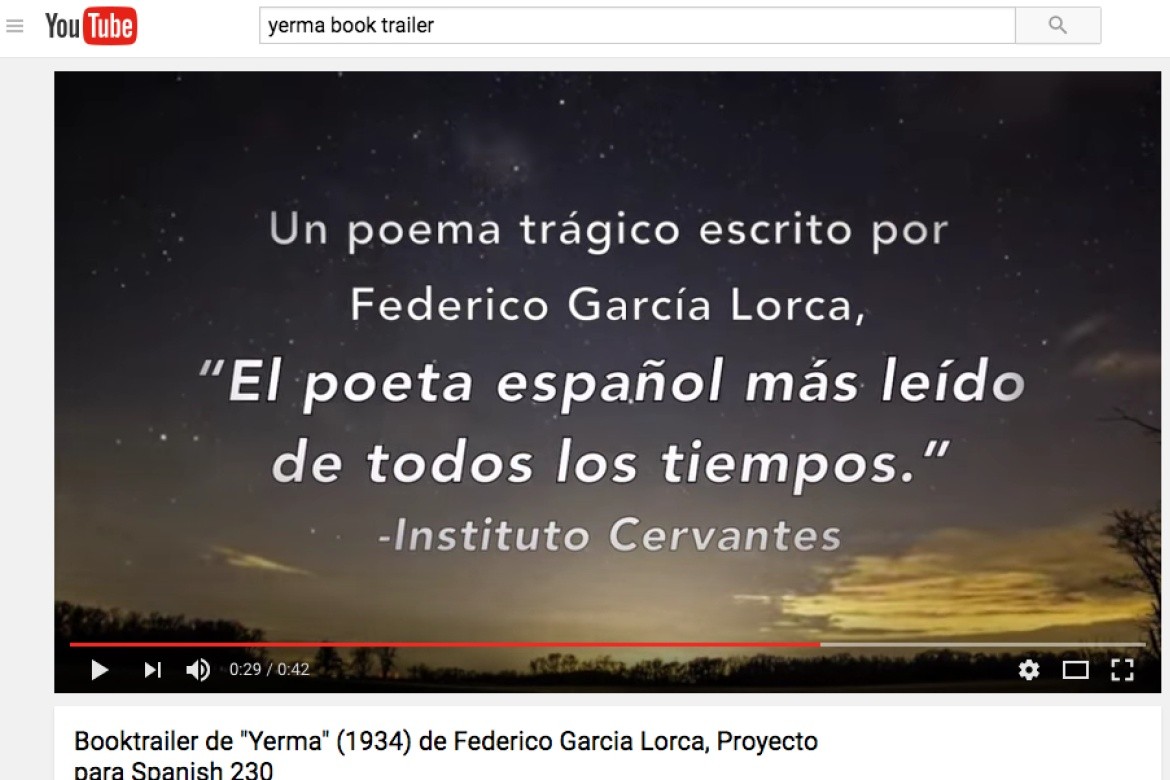Book trailers bring Spanish literature to life

Students learned to create book trailers to spark interest and to entice others to read important literary works by Spanish writers.
Finding ways to make literature inviting and engaging can sometimes be a challenge for instructors. Professor of Spanish, Nieves Romero-Díaz had a novel idea for getting her students excited about the readings in her Spanish 230 class: Spanish Women in Literature and Film (taught in Spanish) during spring 2016. Working in small groups, students were required to create book trailers to spark interest and to entice others to read one of the novels that they had studied over the semester. Nieves wanted to try something new to allow students a closer reading of the texts, get the students more engaged with the readings, and increase their comprehension of the target language.
Library, Information and Technology Services (LITS) liaison Jean Janecki worked with Nieves prior to the beginning of the semester to advise the professor of practical information such as what technology would be used, what type of workshops would be given, what additional assistance outside of class would be provided (such as one on one meetings with the students), and how the final product would be produced and displayed.
The whole process went quite smoothly and students really enjoyed the project. Choosing one of three main texts read in class, (Yerma, El Sur, and Guardián Invisible), students formed groups to work on the different trailers. Throughout the project, they tackled a variety of tasks from searching for the perfect images related to their text, writing a “script”, and delving into (for some) new technology. After an iMovie workshop, students worked on their own and in the Language Resource Center to put the pieces together; adding quotes from the text, music, narration and ultimately producing creative and attractive trailers. The trailers were then uploaded to YouTube and showcased in the final class meeting. Students were fully engaged with their novel and used the Spanish language in new and creative ways, both orally and in writing. The groups collaborated to bring out the best of their text and inspire others to read it from beginning to end. See one of the examples from Yerma (pictured in image above).
Have a new idea like this but not certain what technology would be best? Contact your LITS Liaison for help.